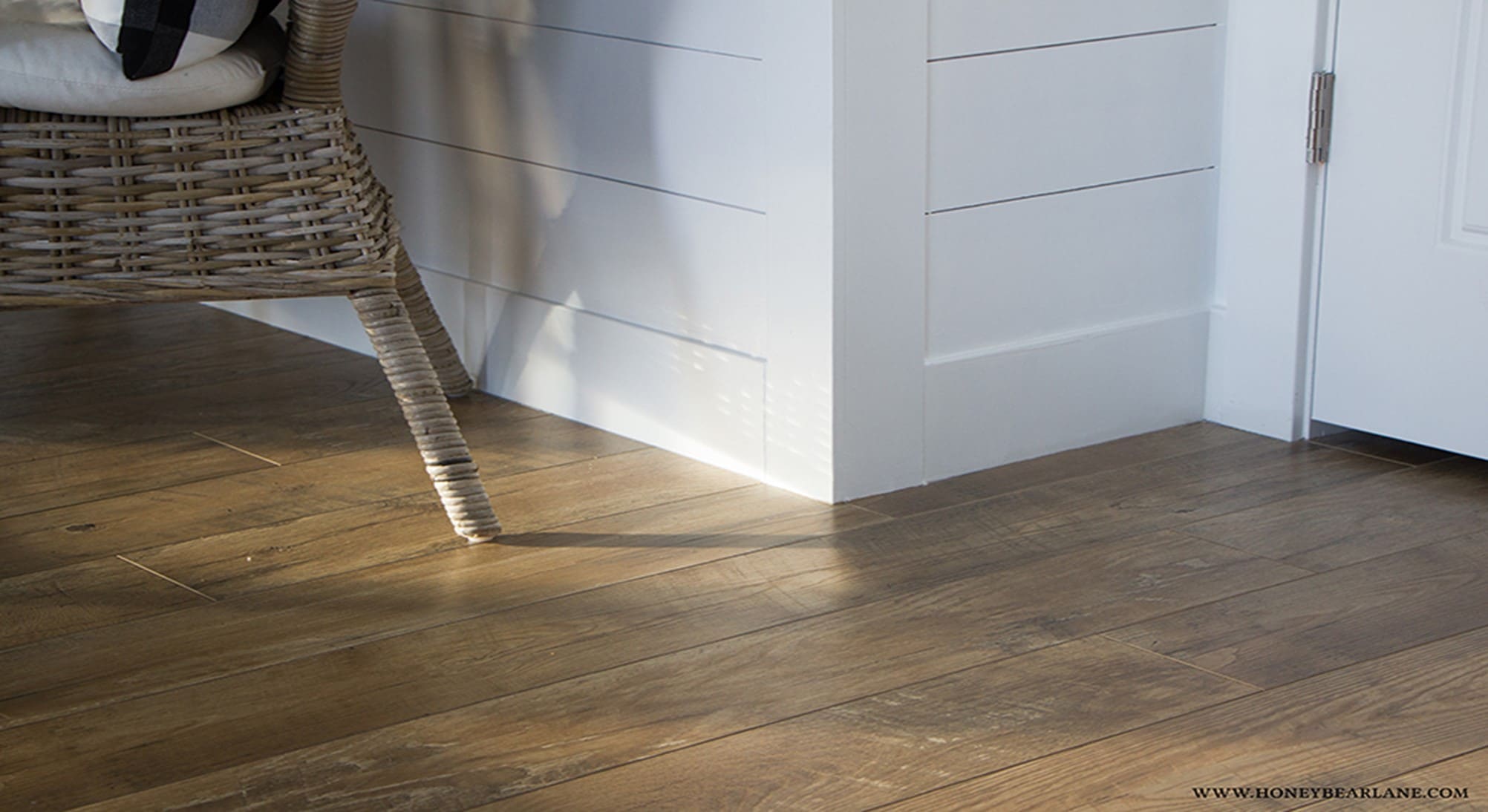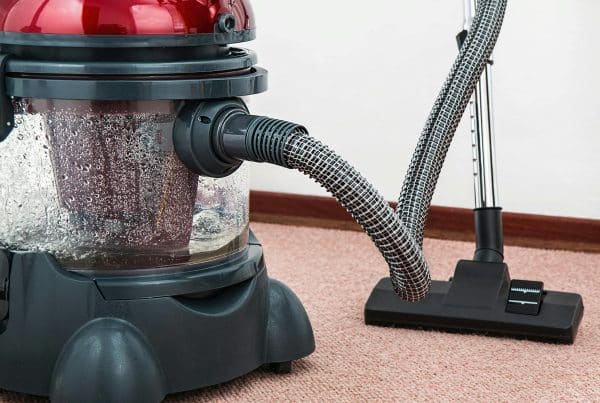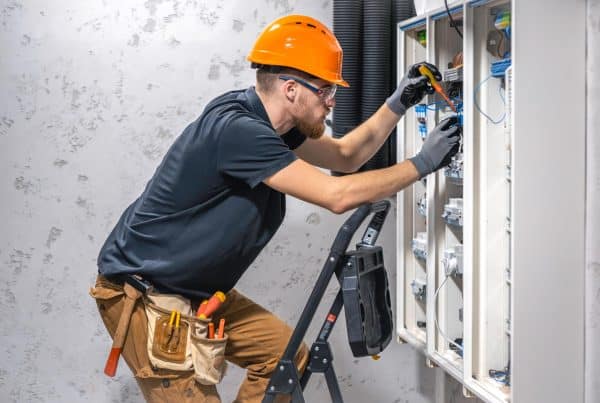One of the most common questions we get from our customers is if shiplap is more expensive than drywall.
The answer to this question varies depending on where you live, how big your project will be and what type of contractor you hire, the type of installation that you want, as well as your location.
In general, both types of material have similar cost per square foot with shiplap costing a little bit more.
This means that it may not matter which one you choose if the price is competitive for your market area!
What is Shiplap?
Shiplap is, in general, a decorative finishing technique usually made of pine boards that have been steam bent and machine sawn to create alternating furrows. This creates an aesthetic that emulates natural wood shingles.
It was originally used in timber-frame houses because it provided structural stability and covered up any gaps between the boards on which the house was built.
Shiplaps are usually installed on the exterior side of a wall, but they can be used as interior treatments and even over windows.
How Much Does Shiplap Cost?
Shiplap is one of the more expensive options available for home siding. shiplap ranges from $5-$30 per square foot!
Why Is Shiplap So Expensive?
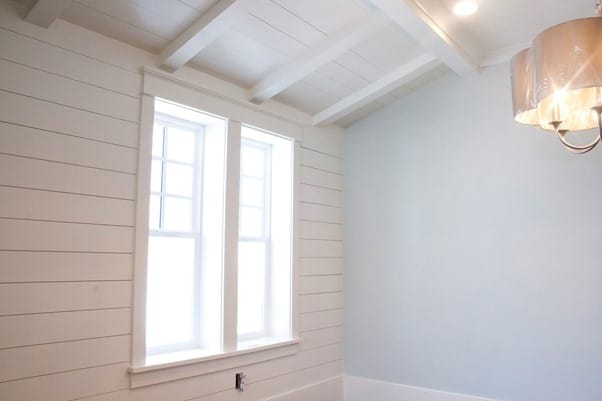
Shiplap is expensive because it requires an additional labor-intensive process for installation. It’s not just a matter of nailing boards over the outside of your wall like drywall.
The cost increases with the complexity of the framing work or if you want to use shiplap as interior treatments rather than just exterior ones.
Steeped roofs, higher buildings, and complex metered joints are more costly per square foot to install shiplap than basic application techniques such as drywall compounds or plasterboard products.
Why Shiplap Walls?
One of the biggest reasons people use shiplap is for aesthetics. Shiplap walls are much more attractive than drywall and plaster board walls. They also provide a warmer feel for your home, which is what many people are looking for!
Shiplap walls don’t require painting or any stain treatment since they are just natural wood boards that have been heat-treated to make them look old. This means that you spend less time maintaining your home and more time enjoying it!
Why Are Most of The Shiplaps More Expensive Than Drywall?
Most of the shiplaps are more expensive than drywall because they are too time-consuming to make, as this is a traditional craft with centuries of history.
Why Are Some of The Materials of Shiplap Less Expensive Than Drywall?
Some materials of shiplap are less expensive than drywall because they have the same design as drywall, but it can’t be used in a bathroom.
Today people buy pre-made slatwall panels for a variety of reasons: time commitments, convenience, and ease.
Because these are not built with nails to attach them like real shiplap is, and instead are made using plastic hooks or clips that allow retailers to take them down or rearrange them for whatever needs arise at any given moment, they ultimately cost less because there’s little labor involved in their production.
How To Reduce the Cost of Shiplap Siding?
Shiplap, which is a type of siding, appears to be more expensive than drywall. However, there are different ways to reduce the cost of shiplap siding:
- Locate an installer through a referral from somebody that you know and trust. In some cases, they may offer discounts for referrals.
- Get quotes from as many installers as possible and compare prices and service packages before making your final decision.
- Ask about any discounts in advance because sometimes installers will offer a discounted rate if you order more than 5,000 nails or material for the job.
It is important to consider how you will use the siding before making your final decision. While shiplap may cost more up front, it could be a better long-term investment because of its durability features.
Shiplap can withstand 100 mph winds, extreme weather conditions, and has a low maintenance requirement – which means that there are less repairs needed and a longer lifespan.
What Are Drywalls?
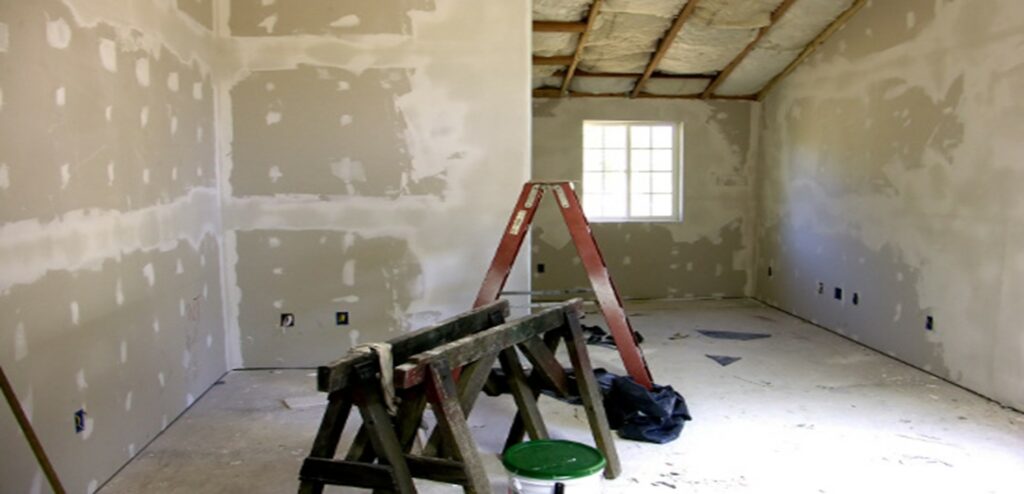
Drywalls are a heavy-duty building material typically composed of two layers of thin sheets of drywall paper that sandwich a layer of gypsum (or sheetrock) with a sheet sanded on one side.
A typical representative composition for the construction would be ½” or 914mm, with the thickness measured in millimetres. Drywalls can also have fireproofing and other materials added to them, which would increase the cost.
How Much Does Drywall Cost?
Drywall in the United States costs between $2.09-4 per sheet, with an average price of about $2.76 per sheet.
The Benefits of Using Shiplap Over Drywall
Standard Benefits:
- Shiplap is more eco-friendly than drywall.
- Shiplap gives your home a natural look and feel.
Emotional Benefits:
- It’s easier to install shiplap than drywall, which means you’ll save on labor costs.
- Shiplap is more flexible than drywall, which means it can be less susceptible to breakage.
- It’s easier for shiplap to go up and down hills when installing.
The Benefits of Using Drywalls Over Shiplaps
Standard Benefits:
- Drywall is one of the cheapest building materials.
- You’ll save on labor costs because it’s easier to install than shiplap.
Emotional Benefits:
- Get a more modern look with drywalls.
- Avoid potential problems like mold and rot, which can happen with shiplaps.
When Should You Use Shiplap or Drywall?
Shiplap boards are a decorative wall cladding made and used in exterior, interior or both regions.
They are often favoured for their texture, rustic look and relatively cheaper pricing compared to some other alternatives available.
Drywall is just plain old building material in the U. Sits used internally and externally and is composed of two layers of drywall paper that sandwich a sheet sanded on one side.
The differences between the materials are their function, type, and price but when it comes down to it – they’re both just building materials with pros and cons.
Drywall typically costs less than shiplap boards so if you’re on a budget or want to save some time and labour, then you should go for drywall.
Why Would a Homeowner Choose Drywall Over Shiplap?
Homeowners who want the benefits of fireproofing in their walls should choose drywall over shiplap.
The materials in your walls play an important role in protecting you and your home from fire, it’s not worth saving a little bit on labor costs if the material isn’t going to protect you from something as devastating as a house fire.
If you’re looking for insulation, then drywalls are also better than shiplap boards.
If you’re looking for a more modern look, then drywall is also the better material to go with because it’s easier to install and will give your home a sleek contemporary surface that shiplaps can’t provide.
While there are many benefits of choosing one over the other, when in doubt – always choose what’s best for you and your family.
Conclusion
If you’re looking to increase the value of your home or want a more durable and attractive option for a room, it may be worth considering Shiplap.
With drywall being cheaper than traditional panelling options like wood, brick or stone, most homeowners are unaware of how much shiplap costs compared to their current wall covering.
Drywall is less expensive because there isn’t any additional labor involved in installation and can produce faster results with fewer steps required.
That’s not to say that Shiplap doesn’t have its advantages; as mentioned before, this type of cladding requires no painting which saves time and money when updating decorative paint colours on walls over time.
Don’t let these differences discourage you from getting what you really want.

